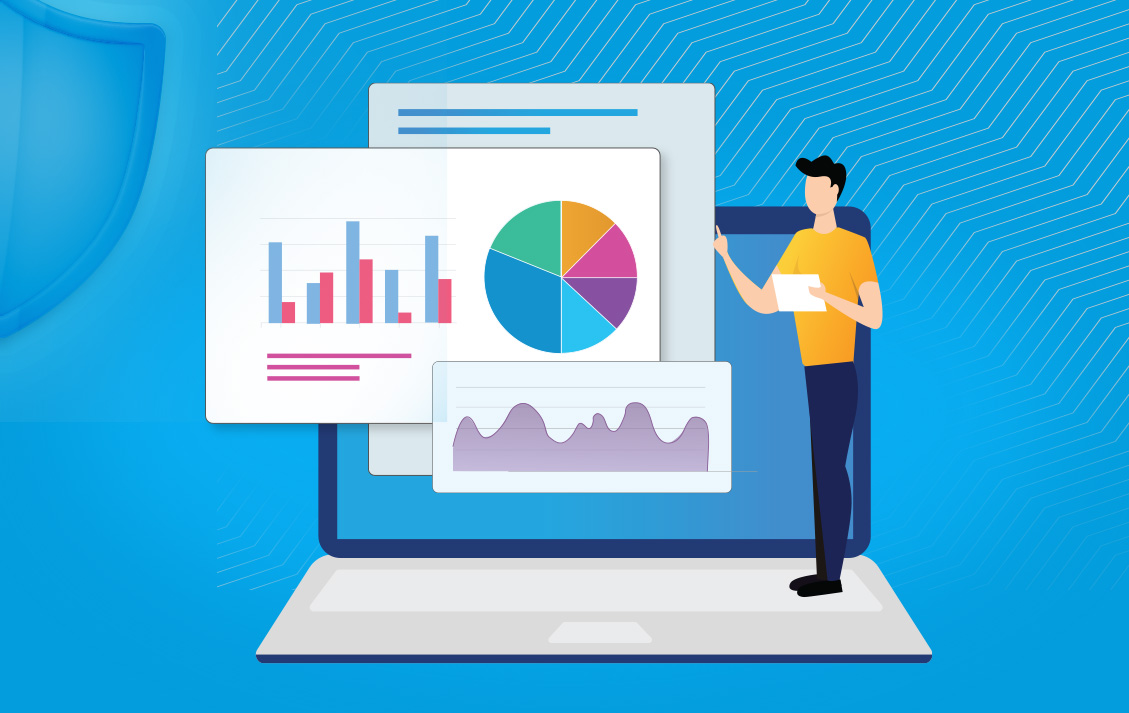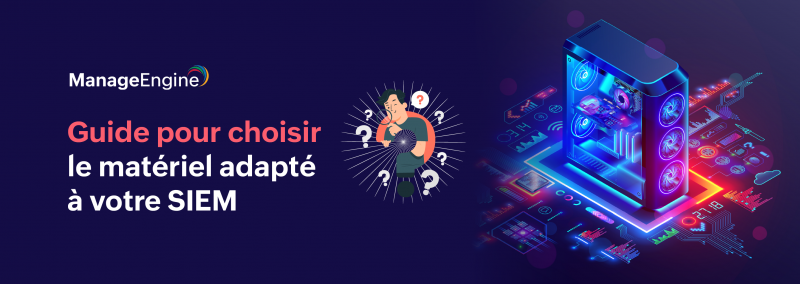
Cyberthreats continue to evolve, causing trillions of dollars in losses. There will be a 76% increase in cybersecurity breaches by 2024, according to StealthLabs. A report by IBM states that it took an average of 287 days to identify and contain a data breach in 2021. According to Verizon’s 2020 Data Breach Investigations Report, 86% of cybersecurity breaches were financially motivated, and 10% were motivated by espionage. Whatever the motive might be, cybersecurity threats have become pervasive and continue to upend every facet of the digital realm. It’s always better to be safe than sorry. And that is why you need a SIEM solution to keep your IT environment secure from cyberthreats and breaches.
Log360 is a unified SIEM solution with cloud access security broker (CASB) and data loss prevention (DLP) capabilities, which can help organizations defend against cyberattacks. It tightly integrates log management and network security analytics tools and seamlessly captures logs from across network and server infrastructures.
Complementing SIEM capabilities with DLP, UEBA, CASB, and SOAR functionalities, it offers a convenient, affordable solution for security analytics and threat remediation across on-premises and cloud resources.
The key features of Log360 are:
-
Comprehensive log monitoring
-
Real-time Active Directory change auditing
-
Robust behavior analytics
-
Integrated IT compliance management
-
Data protection
-
Threat intelligence and analytics
-
End-to-end incident detection, management, and response
Here are five reasons why you should choose Log360.
1. Real-time security monitoring
Log360 monitors all the key resources in your network. Let’s assume an attacker is trying to hack into your network and they’re making multiple attempts to log in to an endpoint. In such a scenario, there will be multiple login failures. Log360 will immediately trigger alerts so you’re aware of the situation.
Log and data analytics:
Log360 can collect and analyze logs from as many as 700 different data sources. It seamlessly collects and analyzes logs from various sources and produces insights in the form of reports. It triggers alerts when something anomalous occurs, like multiple login failures, which could be an indication of a possible breach, and therefore helps identify security threats immediately.
VPN activity monitoring:
Through VPN session monitoring, Log360 provides critical information such as the number of active VPN sessions, the duration of each VPN session, and the status of every individual user’s VPN connection. With the help of this information, any suspicious activities, like multiple VPN login failures and multiple successful VPN connections by the same user from different places within a given time frame, can be identified with instant alerts.
The Colonial Pipeline attack—the hack that took down the largest fuel pipeline in the US—was the result of a compromised VPN account. The user credentials were leaked on the dark web, and hackers used them to hack into the network. Had the account used multi-factor authentication, the hack could have been prevented.
Privileged user activity monitoring:
Privileged users have permission to make configuration changes that might jeopardize the security of your IT infrastructure. With Log360, all privileged user activities get recorded; this includes the creation of security groups, additions of members into security groups, changes to users’ access permissions, and modifications to Group Policy objects.
For example, with Log360, organizations can look for scenarios where new employees are added into highly sensitive groups. In these cases, an alert can be triggered, and the security analyst can ascertain if this addition was warranted.
File integrity monitoring and file activity monitoring:
While file integrity monitoring is used to monitor and detect file changes at the system level, file activity monitoring keeps track of all the changes made to files and folders, such as reading, editing, copying and pasting, and renaming a file or folder. If any file activity is unauthorized, it will immediately trigger alerts as this might lead to non-compliance and legal issues for the business. The changes made might also affect the functioning of servers or applications. Moreover, cyberattackers might try to tamper with log files to cover their tracks while carrying out an attack.
2. Threat intelligence
Assume that there is an intruder in your network, and that intruder is already known to be malicious by someone else. Wouldn’t identifying them be much more simple and efficient if you used this other person’s intelligence? With such insight, you can identify the hacker the second they intrude into your network. Whenever an intruder enters your network from a blocklisted IP address, domain, or URL, you will be notified in real time. Log360 processes the latest threat information from the highly prominent STIX and TAXII. These are global standards used to represent and communicate threat information. They have the most up-to-date and reliable information. Since Log360 has access to this, it can look out for intruders from any corner of the world.
3. User entity and behavior analytics
User and entity behavior analytics (UEBA) is a cybersecurity technique that uses machine-learning algorithms to analyze user activities and detect anomalies like system accesses at unusual times, unusual software running for a user, and unusual file downloads.
UEBA can help you:
♢ Identify anomalous user behavior based on activity time, count, and pattern.
♢ Expose threats emanating from insider attacks, account compromises, and data exfiltration.
♢ Get more security context by associating a user’s different actions with each other.
4. Incident management and response
Incident management is the bridge between incident detection and response. Incident management tools come in handy to ensure the smooth flow of information. Log360 has a built-in incident management console and allows you to forward security incidents to external help desk software like ManageEngine ServiceDesk Plus and ServiceNow.
♢ Quick mitigation: This enables you to drastically reduce incident resolution times by quickly and accurately detecting, categorizing, and analyzing an incident.
♢ Forensic analysis: An attack that might take place in the future can be prevented by analyzing the tracks left behind by attackers.
5. Intuitive, insightful analytics and customizations
The built-in compliance and security analytics is one of the best features of this product. It allows you to review user and entity activities with ease. The real-time reports make it easy for you to make decisions.
Every business has its own unique characteristics, and therefore the threats vary for every organization. You can customize use cases for every aspect of Log360 according to your requirements. This helps identify the threats your company is more prone to. For example, correlation and alerting rules can be configured according to your use cases. You can also customize the method of risk scoring and the way the solution understands anomalies relevant to your business.
Log360 has been positioned in the Gartner Magic Quadrant for SIEM for five years in a row. Ensuring the safety and security of your IT environment is the most important part of your business as any cyberattack or data breach might lead to a loss of trust, business, and brand value. To avoid cyberattacks, organizations should always be one step ahead of attackers. This means knowing all the vulnerabilities and loopholes in your IT infrastructure so you can patch them before attackers exploit them. Log360 helps you be fully aware of what’s happening in your IT infrastructure and alerts you of any potential threats. Keeping tabs on every inch of your IT infrastructure and managing every single component with different software can be arduous and confusing. That is why Log360 will be just what you require to make your job easier, as it is a one-stop solution to monitor your entire IT infrastructure in a single console.
